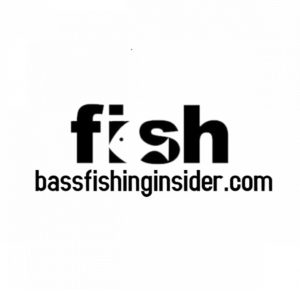
Unraveling the bond between bass fishing and conservation can unveil unexpected transformations within the sport. What role do conservation practices play in shaping the future of bass fishing? Why should anglers and enthusiasts care about the sustainability of their practices?
I learned to enjoy bass fishing from my dad and have now passed the love to my kids, who, in turn, I hope, will share the joy of fishing with their kids. My hope is that we can all chip in for a concerted effort to preserve this incredible pastime for future generations.
A true conservationist is a man who knows that the world is not given by his fathers, but borrowed from his children.
— John James Audubon

Unlocking the Significance of Bass Fishing Conservation
Bass Fishing Conservation isn’t just a catchy term for environmentalists. It represents an integral part of responsible angling – a commitment to preserving aquatic ecosystems. By maintaining healthy bass populations, we’re ensuring the survival of numerous other organisms within these ecosystems. What could be more important?
A healthy bass population isn’t just beneficial for the angler, but it is a sure sign of a thriving aquatic ecosystem. Studies have shown that the presence of largemouth bass is often a measure of the overall health of freshwater bodies.
How Can Fishing Be a Game Changer and Catalyst for Conservation?
Did you know that bass fishing can serve as a catalyst for change? We can secure the future of endangered bass populations by promoting responsible fishing practices like catch-and-release ethics and advocating for fishing regulations. When did you last consider the transformative potential of your angling practices?
In the fishing world, bass fishing tournaments have witnessed a paradigm shift. Organizations like Bassmaster have been promoting catch-and-release tournaments, underlining the importance of conservation in the sport.
Reel in Responsibly: Comprehensive Guide to Sustainable Bass Fishing
Sustainable fishing practices are an integral part of being a responsible angler. Are you ready to dive into the world of sustainable bass fishing? Take a look at some of these practices:
- Catch and Release: One of the most effective conservation strategies in bass fishing. Catch-and-release ensures that bass populations are maintained, supporting biodiversity in aquatic ecosystems.
- Habitat Protection: Preserving and restoring natural habitats allows bass populations to thrive. Invasive species impact the health of these habitats, so anglers should be aware and take precautions to prevent their spread.
- Respect Fishing Regulations: Fishing regulations are in place for a reason. They safeguard bass populations and contribute to maintaining the health of aquatic ecosystems.
Insider Tip: When I’m done fishing, I try to check my motor and trailer for any vegetation. Removing vegetation is one way to help stop invasive spread.
Expert Conservation Methods in Bass Fishing: How to Protect Bass Populations for Future Generations
Bass fishing holds a special place in the hearts of anglers, captivating enthusiasts worldwide with its thrill and challenge. However, it is vital to recognize that bass populations face threats, and without proactive conservation measures, the sport we love may suffer.
To ensure the longevity of bass populations and sustain the incredible bass fishing experiences for future generations. This comprehensive guide will explore expert conservation methods backed by experts, authorities, and trusted sources.
Conservation efforts begin by treating our fisheries with the utmost respect. We can mitigate the negative impact on bass populations and their habitat by adopting responsible practices. Consider the following essential steps:
- Leave No Trace: When visiting fishing spots, avoid leaving behind rotting bait, gutted fish, discarded lines, or litter. These can harm bass and other species, disrupt the natural balance, and contaminate the water [source].
- Responsible Trash Disposal: Properly dispose of all trash and tackle, including used lures, hooks, and packaging. Dispose of them in designated areas or recycling programs to prevent environmental contamination.
- Respect Wildlife: Recognize that preserving the natural environment benefits ba, other fish species, and wildlife. Avoid actions that harm or disturb wildlife, such as leaving behind tangled lines or trash that can ensnare animals.
- Environmental Awareness: Remember that the ecosystem’s health directly impacts the fishing experience. By protecting the environment, you safeguard the bass and other aquatic life, ensuring the sustainability of the sport.
Conserving bass populations involves making informed choices about harvesting fish. Implementing the Catch, Photograph, and Release method (CPR) can have a significant positive impact:
- Preserving Reproduction: Releasing bass allows them to reach maturity and contribute to the reproductive cycle, bolstering population growth and maintaining healthy fish stocks.
- Sustainable Fishing: By practicing CPR, anglers increase the chances of catching bigger bass in the future. It promotes responsible fishing practices and ensures the availability of trophy-worthy fish for all anglers to enjoy.
- Reducing Harvest Pressure: Selective release of bass helps prevent overharvesting, allowing populations to thrive and maintain a healthy balance within the ecosystem.
Although they are missing the photo portion of the plan above, major tournament organizations like Bassmaster, Major League Fishing, and NPFL use catch-and-release formats. Although Bassmaster and NRFL use a traditional weigh-in style event, they still utilize systematic processes to ensure that most fish are released alive and well. Major League Fishing’s innovative process includes a catch, weigh, and immediate release format governed by in-boat officials just after a catch by the angler instead of at the stage.
Understand and Respect Size and Bag Limits: Size and bag limits established by fisheries management authorities are crucial for bass conservation. Adhering to these regulations is essential for sustaining bass populations and the sport:
- Preserving Breeding Stock: Size limits protect bass during their reproductive period, ensuring that they have the opportunity to spawn and contribute to the next generation of bass.
- Balancing Harvest: Bag limits set reasonable restrictions on the number of fish an angler can retain. Reasonable limits prevent excessive harvests and maintain a sustainable balance between angling and conservation.
Creating awareness and educating fellow anglers about bass conservation are powerful steps toward sustainable fishing practices. Consider the following actions:
- Engage in Community Events: Participate in local conservation events, workshops, or educational programs focused on bass fishing conservation. These initiatives foster a sense of community and spread knowledge among anglers.
- Share Knowledge: Share your conservation experiences and insights through platforms like your blog. By providing valuable information and promoting responsible fishing practices, you can inspire others to become advocates for bass conservation.
Restoring Paradise: How to Craft Safe Havens for Bass
Restoring and preserving the natural habitats of bass is a critical strategy in ensuring their population’s long-term health and prosperity. By creating safe and thriving environments, we can provide bass with the ideal conditions for their growth and reproduction.
Habitat restoration is essential for the conservation of bass populations. By revitalizing their natural habitats, we can address various environmental factors that impact bass’ survival and well-being. Habitat restoration is vital for a number of reasons:
- Optimal Reproduction: Restoring habitats enables bass to engage in successful breeding behaviors, contributing to healthy population growth.
- Food Chain Balance: Healthy habitats support diverse ecosystems, ensuring an ample food supply for bass and other aquatic organisms. This balance is crucial for the overall health and sustainability of bass populations.
- Natural Shelter: Well-restored habitats provide essential cover, including submerged vegetation, fallen trees, and rock structures, offering protection and refuge for bass during various stages of their life cycle.
To successfully restore bass habitats, it is crucial to understand the key elements that contribute to their well-being. Consider the following factors when crafting safe havens for bass:
- Water Quality: Bass thrive in clean and oxygen-rich waters. Monitoring and improving water quality through proper filtration, runoff management, and pollution control measures are vital for habitat restoration.
- Vegetation and Structure: Incorporating submerged aquatic vegetation, such as eelgrass and hydrilla, and natural structures like stumps, rocks, and brush piles create vital habitats for bass, offering cover, spawning grounds, and foraging opportunities.
- Water Depth and Temperature: Maintaining suitable water depth and temperature ranges helps sustain the health and behavior of bass. Habitat restoration should aim to recreate the natural fluctuations and thermal zones preferred by bass.
Implementing proven techniques for habitat restoration can significantly enhance bass populations. The following strategies may be effective as part of an overall plan:
- Vegetation Management: Introduce and maintain beneficial aquatic vegetation to enhance habitat complexity and improve water quality. Management includes managing invasive species and promoting the growth of native vegetation.
- Artificial Structure Placement: Deploying artificial structures, such as fish attractors, submerged habitats, and spawning beds, can compensate for the loss of natural habitat and provide additional shelter and breeding sites for bass.
- Erosion Control and Shoreline Stabilization: Implement erosion control measures, such as riprap or vegetated buffers, to prevent sedimentation and maintain stable shorelines. These efforts help protect bass spawning areas and preserve water quality.
Restoring bass habitats is a vital component of bass fishing conservation. By understanding the significance of habitat restoration, identifying key elements of bass habitats, and employing effective restoration techniques, anglers can actively contribute to the creation of safe havens for bass.
For some excellent bass fishing tips on how to catch bass in artificial structures and other bass habitat, check out 49 Bass Fishing Tips that Always Seem to Work.
Is it ok to Eat Bass? Should You Keep or Release Bass?
While I am not entirely opposed to keeping and consuming bass, I firmly believe it should be done per regulations and with a sense of responsibility.
First, regulations can serve a valuable purpose. They help to protect the ecosystem and maintain sustainable fish populations. Overfishing can have detrimental effects on the balance of water life, leading to ecological imbalances and potential species extinction. By adhering to regulations set by fisheries management authorities, we can ensure that bass populations are not overexploited, allowing them to thrive and sustain their role in the aquatic environment.
Second, responsible fishing practices are crucial in preserving the overall health of our water systems. It is essential to use appropriate fishing gear and techniques that minimize harm to non-target species and their habitats. By employing methods such as catch and release, where feasible, we can reduce the impact on bass populations while still enjoying the thrill of the sport.
Furthermore, responsible consumption of bass involves considering factors such as size limits and bag limits. These limits are established to ensure that the fish have a chance to reproduce and maintain healthy population levels. By respecting these limits, we can contribute to the long-term viability of bass stocks and allow future generations to enjoy the same experiences.
In conclusion, I grew up catching and eating bass at family fish cookouts, and those are some of my fondest memories. My perspective is that while keeping and eating bass can be acceptable, it should always be done in a manner that aligns with regulations and demonstrates responsible fishing practices. By valuing the sustainability of fish populations and the health of our aquatic ecosystems, we can enjoy the benefits of bass fishing while preserving these resources for the future.
Eat responsibly. Eat well. Here’s a great recipe for cooking bass.
Traversing the Polluted Depths: Pollution’s Role in Bass Conservation
Pollution poses a significant threat to bass populations. But how does pollution affect our finned friends, and what steps can we take to combat it? From plastic pollution to chemical runoff, our waters face numerous threats that endanger the bass population.
Pollution has profound effects on the life cycle of aquatic organisms. Changes in water temperature and pH levels can affect the spawning and growth of bass, emphasizing the need for a cleaner aquatic environment.
Specific Ways to Clean Up Our Act and Move Towards a Pollution-Free Future for Bass
Creating a pollution-free future for our bass populations is a shared responsibility that requires collective action. By taking steps to clean our waters and provide a healthier habitat for aquatic life, we can contribute to the preservation of bass populations. Below, we will explore actionable measures you can take to combat pollution and pave the way for a pollution-free future for bass.
Pollution poses significant threats to the well-being and survival of bass populations. It is crucial to comprehend the consequences of pollution on these magnificent game fish. Here’s why pollution reduction is essential:
- Ecosystem Disruption: Pollution disrupts the delicate balance of aquatic ecosystems, affecting the availability of food sources and altering water quality, which can harm bass and other aquatic organisms.
- Toxicity and Harmful Algal Blooms: Excess nutrients, such as nitrogen and phosphorus, can lead to harmful algal blooms and hypoxia, creating oxygen-depleted dead zones that impact the health and survival of bass and other marine life.
- Debris and Entanglement: Debris, including plastic waste and abandoned fishing gear, poses risks of entanglement and ingestion for bass, leading to injuries, suffocation, or starvation.
To move towards a pollution-free future for bass, adopting practices that mitigate pollution and protect their habitats is essential. Here are actionable steps you can take:
- Reduce Plastic Usage: Minimize single-use plastics in your daily life, such as plastic bags, straws, and water bottles. Opt for reusable alternatives and participate in local initiatives like “Skip the Straw” campaigns to raise awareness about plastic pollution.
- Proper Waste Disposal: Dispose of waste responsibly by recycling and correctly disposing of hazardous materials. Prevent littering and participate in local clean-up efforts to remove trash from waterways and shorelines.
- Manage Runoff: Be mindful of chemicals used in your yard or garden, as they can wash into water bodies through runoff. Choose eco-friendly alternatives and follow proper application guidelines to minimize the impact of runoff pollution.
- Support Policy Changes: Stay informed about environmental policies and advocate for stronger regulations to reduce pollution and protect water quality. Engage with local and national organizations working towards pollution reduction and support their initiatives.
Achieving a pollution-free future for bass requires collective efforts and collaboration among individuals, communities, and governmental bodies. Here are key initiatives and partnerships working towards cleaner waters:
- Interdisciplinary Research: Scientists, social scientists, and traditional knowledge holders are joining forces to study the impacts of pollution and develop strategies for a more sustainable future.
- Governmental Actions: Governments at various levels are crucial in implementing pollution reduction strategies and enforcing regulations to protect water quality and aquatic ecosystems.
- Awareness and Education: Environmentally friendly organizations raise awareness about pollution and its consequences, educate the public, and provide resources for sustainable practices.
By reducing pollution and promoting cleaner waters, we can contribute to a pollution-free future for bass. Understanding the impact of pollution on bass populations and implementing measures such as reducing plastic usage, proper waste disposal, managing runoff, and supporting policy changes are essential steps in safeguarding their habitats.
Small Hooks, Big Waves: Does Bass Conservation Really Matter?

Our actions today, no matter how small, can significantly impact the future of bass populations. Here’s how your efforts today can lead to a brighter, healthier future:
- Population Growth: Every bass that’s released back into the water has the potential to reproduce and contribute to the growth of its population.
- Genetic Diversity: Catch and release ensures the maintenance and increase of genetic diversity, which is vital for the species’ resilience.
- Larger Specimens: Bass that are allowed to grow to their full potential provide a thrilling experience for future anglers.
By practicing ethical angling practices, we contribute to preserving this species for future generations.
Final Word. Conservation Begins at Home: Simple Steps for a Significant Impact
When it comes to bass fishing conservation, every action counts! Whether you’re an experienced angler or new to recreational fishing, your efforts can significantly preserve our fishing resources.
Incorporating sustainable practices into your daily life is crucial to everyday conservation. You can contribute to the world of bass fishing conservation by making small changes. These changes don’t have to be complicated or time-consuming. They can be simple and manageable adjustments that collectively make a big difference.
By reducing your ecological footprint, practicing catch and release whenever possible, and respecting size and bag limits, you can help maintain healthy bass populations. Conserving water and energy, properly disposing of waste, and using environmentally friendly fishing gear are additional ways to contribute to the sustainability of our natural resources.
Remember, the goal is to create a harmonious balance between enjoying our fishing experiences and preserving the ecosystems that support them. Together, we can make waves and ensure the LONGEVITY OF BASS FISHING for future generations to enjoy.
Start today! Explore the many ways you can contribute to bass fishing conservation right from the comfort of your own home. Take pride in your role as a steward of the environment and work towards a sustainable and thriving future for bass fishing and beyond.




